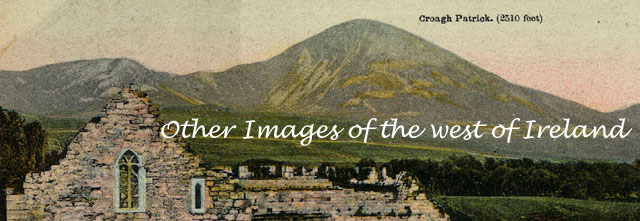

|
| WALSH/LANGAN INTRODUCTION - HOME PAGE |
| Scenes from the west of Ireland
|
| Moyne Abby Ballina, County Mayo, Ireland
| |

| |
| Print collection of Maggie Land Blanck | |
| Westport, Co Mayo Westport is about 20 miles from Ballinrobe.
| |
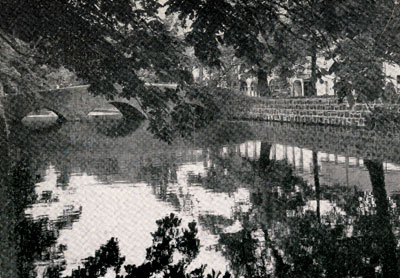
| The Mall, Westport
|
| Connacht Guide, circa 1948, collection of Maggie Land Blanck | |
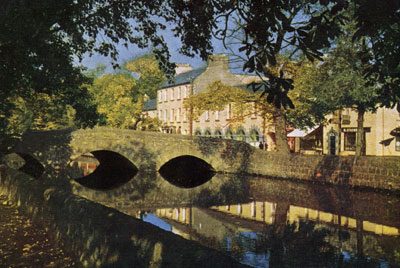
| The Mall, Westport No postmark |
| Postcard collection of Maggie Land Blanck | |
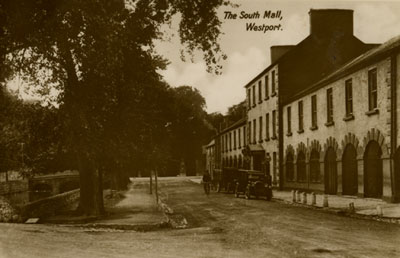
| The South Mall, Westport No postmark |
| Postcard collection of Maggie Land Blanck | |
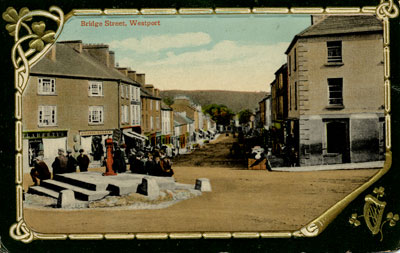
| Bridge Street Westport No postmark |
| Postcard collection of Maggie Land Blanck | |

| Westport, Westport No postmark
|
| Postcard collection of Maggie Land Blanck | |
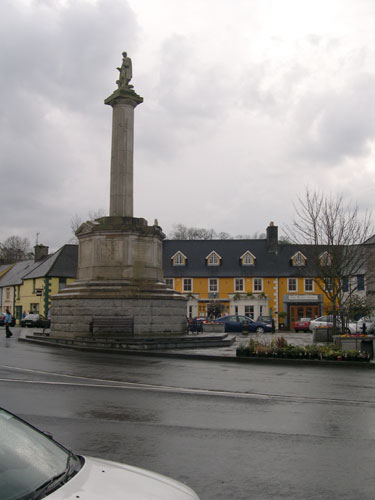 |
Westport, 2005 |
| Photo Ed Land, March 2005 | |
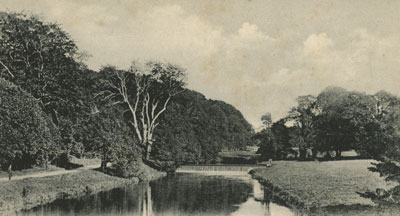 |
In the Demesne*, Westport, Co Mayo |
| Postcard collection of Maggie Land Blanck
*Demesne, pronounced di mayn [main], was an estate occupied by the owner rather than being rented out. | |
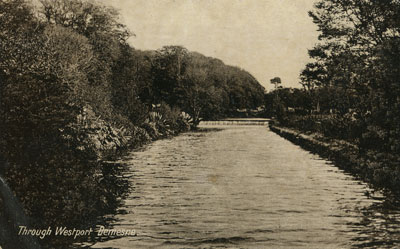 |
Through Westport Demesne |
| Postcard collection of Maggie Land Blanck | |
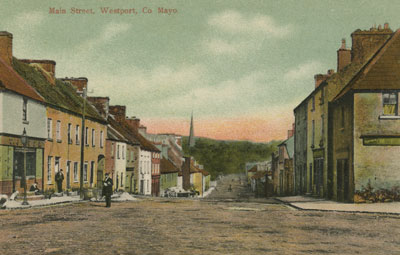 |
Main Street, Westport, Co. Mayo |
| Postcard collection of Maggie Land Blanck | |
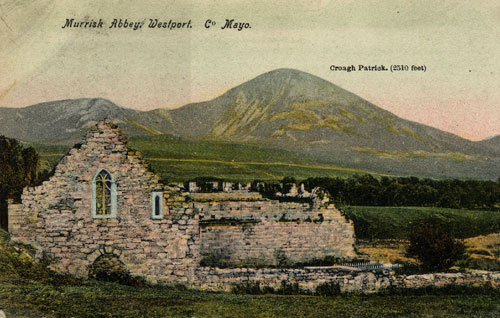
|
"Murrisk Abby, Westport, County Mayo Croagh Patrick "(2510 feet)
Dated 1907 |
| Postcard collection of Maggie Land Blanck | |
| Claremorris The Midland and Great Western railroad from Dublin came to Claremorris in May of 1862. By December 1862 it extended as far as Castlebar.
| |
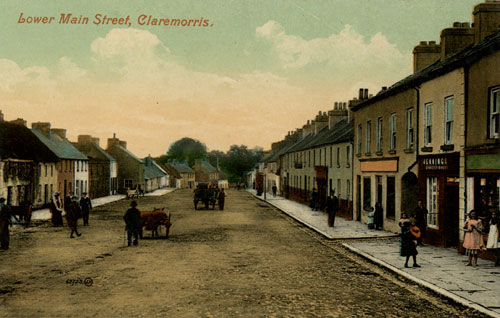
| Lower Main Street, Claremorris
|
| Postcard collection of Maggie Land Blanck | |
 |
Church Street, Claremorris, not posted |
| Postcard collection of Maggie Land Blanck | |
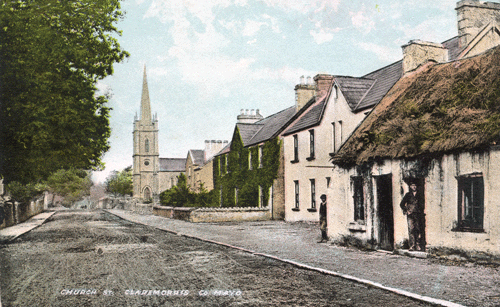 |
Church Street, Claremorris, not posted |
| Postcard collection of Maggie Land Blanck | |
 |
Castlemagarett, Claremorris Ireland |
| Postcard collection of Maggie Land Blanck
Castlemagarret was the property of Lord Oranmor. It is now a private nursing home. See Estate: Browne (Castlemagarett) | |
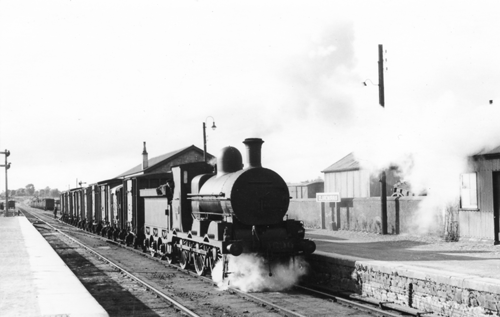 |
"590 Southbound Claremorris 29.6.38" |
| Postcard collection of Maggie Land Blanck | |

|
A sketch at Claremorris court house from the Illustrated London News, Nov. 26, 1881
|
| Postcard collection of Maggie Land Blanck | |
| Clew Bay, Co Mayo
| |
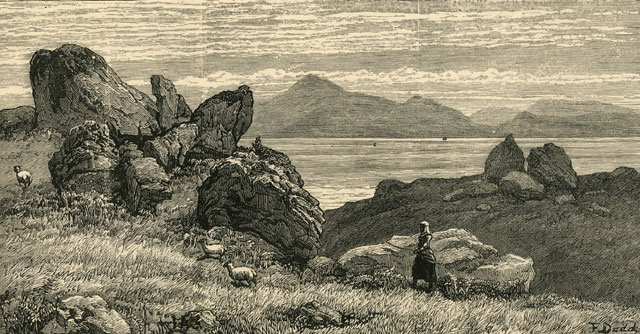
| |
| Print collection of Maggie Land Blanck
CROAGH PATRICK, FROM THE MAYO SHORE OF CLEW BAY
The Illustrated London News, Nov. 20, 1880
| |
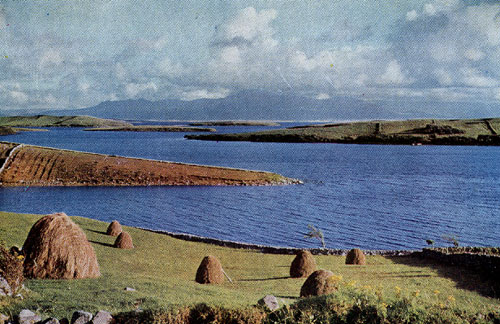
|
"Clew Bay, and Croagh Patrick, from Mallaranny, Co. Mayo, Ireland."
Not dated |
| Postcard collection of Maggie Land Blanck | |
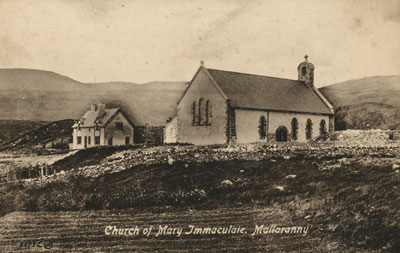 |
Church of Mary Immaculate, Mallaranny |
| Postcard collection of Maggie Land Blanck | |
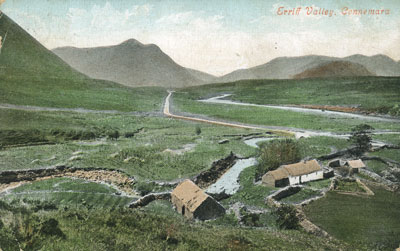 |
Erriff Valley, Connemara |
| Postcard collection of Maggie Land Blanck | |
| Galway
| |
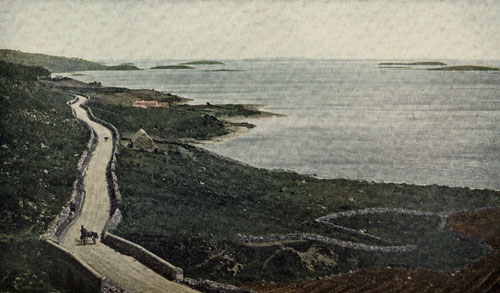
|
"In County Galay"
Near Mochara there are many stone walls of the type shown in this picture. |
| Stoddard Lectures Ireland, 1901 | |
| Oranmore, Co Galway
| |
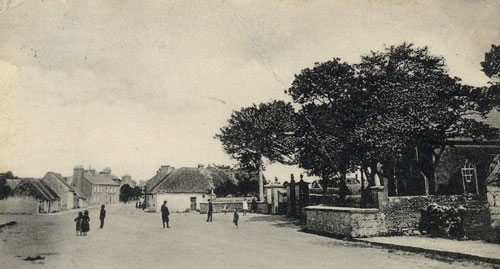
|
"Oranmore, Co Galway"
Dated 1905 |
| Postcard collection of Maggie Land Blanck | |
| County Sligo
| |

|
"Holy Well, Sligo"
No date |
| Postcard collection of Maggie Land Blanck | |
| There was a holy well in Tubersharre, Mocharra. Holy wells were places of pilgrimage. | |
| More of County Mayo
| |

|
"Bullintubber Abbey, Co. Mayo, Ireland"
No date |
| Postcard collection of Maggie Land Blanck | |
Printed on back:
Ballintubber Abbey, co. Mayo, Ireland: The Abbey is south of Castlebar,just off the road to Ballinrobe. | |
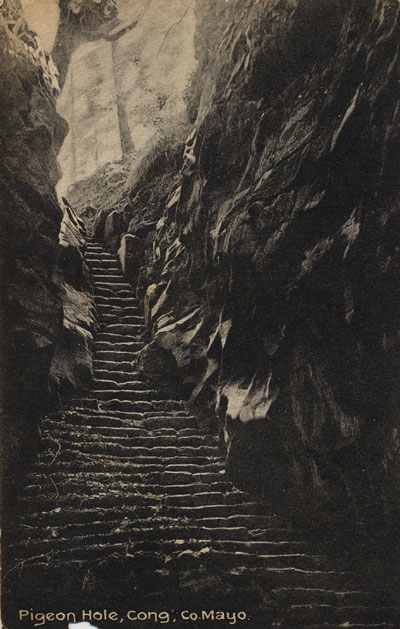
|
"Pigeon Hole, Cong, Co. Mayo, Ireland"
No date This was reputed to be a hiding place of priests during the penal days. |
| Postcard collection of Maggie Land Blanck | |
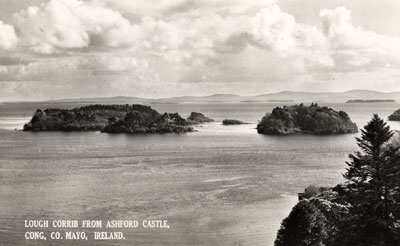
| Lough Corrib from Ashford Castle, Cong, Co. mayo, Ireland No postmark |
| Postcard collection of Maggie Land Blanck | |
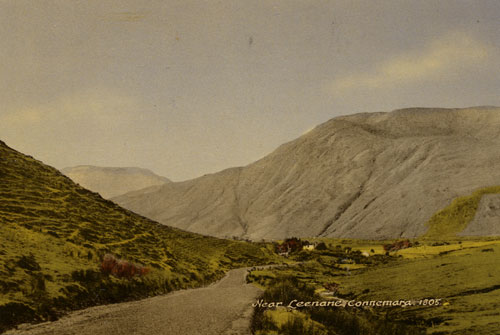
|
"Near Leenane, Connemara, 1805"
|
| Postcard collection of Maggie Land Blanck | |
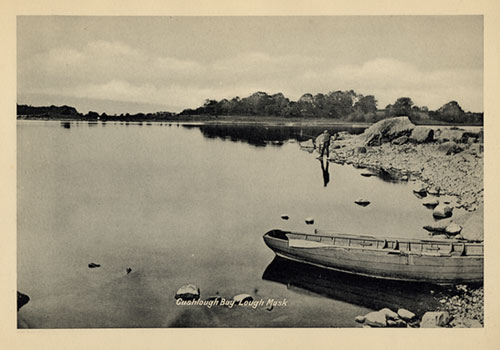 |
| Cushlough Bay, Lough Mask
Cushlough Bay in Lough Mask is situated about three miles west of the town of Ballinrobe.
|
| Photo from Souvenir of Ballinrobe (Co. Mayo) Album of Local Views, F Kilkelly, Bookseller, Ballinrobe, no date |
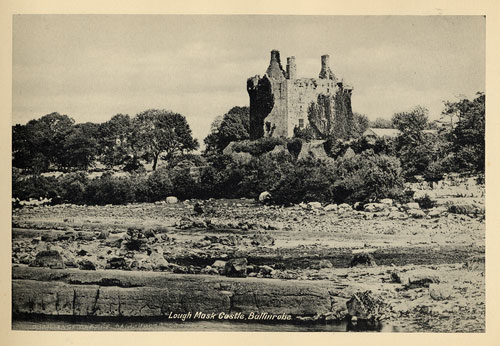 |
| Lough Mask Castle, Ballinrobe
The Lough Mask Castle is on private property 6.5km from Ballinrobe on the Lough Mask Road. It was built in 1480 by the DeBurgos (later Burke). Lough Mask House (the roof of which is visible next to the castle) was the home in the 1870s of Captain Charles Boycott of "boycott" fame.
|
| Photo from Souvenir of Ballinrobe (Co. Mayo) Album of Local Views, F Kilkelly, Bookseller, Ballinrobe, no date |
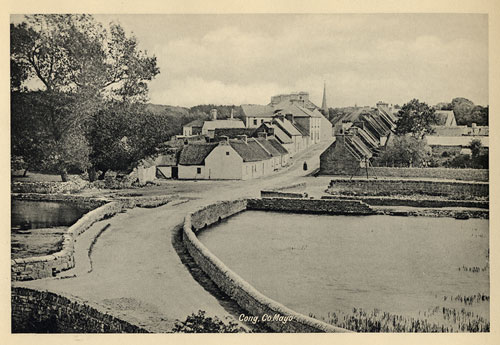 |
| Cong, Co. Mayo
Cong is a popular tourist spot in south Mayo. In addition to the Ashford Castle and Cong Abbey (both pictured below) the town of Cong is "famous" as the setting for the movie "The Quite Man". The story of a prize fighter who left Ireland for America and his return to his birth place in search of peace, the movie (1951) was directed by John Ford and starred John Wayne and Maureen O'Hara. Fans of the movie take organized tours of the places in south Mayo and Galway that were used as settings in the movie.
|
| Photo from Souvenir of Ballinrobe (Co. Mayo) Album of Local Views, F Kilkelly, Bookseller, Ballinrobe, no date |
 |
| Ashford Castle, Cong
Ashford Castle is on the north shore of Lough Corrib about 13 miles south of Ballinrobe. The original part of the castle dates from the 13th century. Ashford Castle belonged to the Guinness family in the 19th century. It was transformed into a luxury hotel in 1939. |
| Photo from Souvenir of Ballinrobe (Co. Mayo) Album of Local Views, F Kilkelly, Bookseller, Ballinrobe, no date |
 Posted 1955 Posted 1955 |
 |
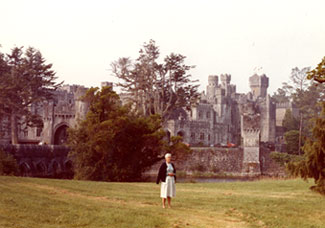 |
| Agnes Goehle Land at Ashford Castle in 1980
|
| Photo by Agnes Goehle Land and Bud Land |

| |
| Postcard collection Maggie Land Blanck | |
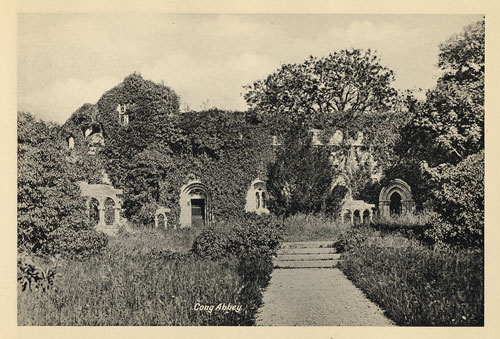 |
| Cong Abbey, Cloister
Cong Abbey was founded in 628 CE. It was burnt and rebuild a number of times. The last High King of Ireland, Ruadhri O'Connor, lived here from 1183 until his death in 1198. The abbey was active until at least 1829.
|
|
Photo from Souvenir of Ballinrobe (Co. Mayo) Album of Local Views, F Kilkelly,
Bookseller, Ballinrobe, no date
|
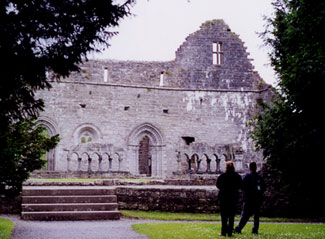 | Cong Abbey cloister, 2001. |
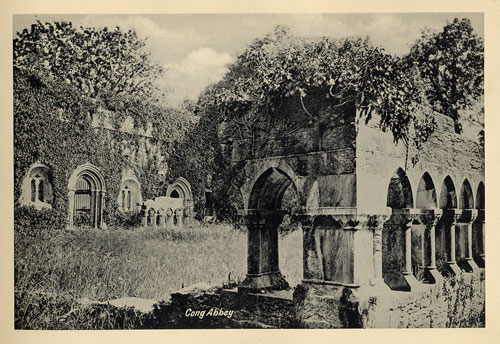 |
| Cong Abbey
The cloister, pictured above, dates to circa 1200. Some of the cloister pillars were restored in the 19th century.
|
| Photo from Souvenir of Ballinrobe (Co. Mayo) Album of Local Views, F Kilkelly, Bookseller, Ballinrobe, no date |
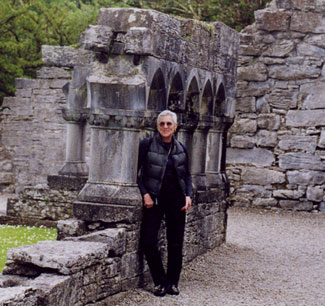 |
| Me at Cong Abbey in June, 2001. I'm at is what is left of the large section of the cloister pictured above. |
| Cong Abbey as photographed by Ed Land March 2005
|
 |
| Photo Ed Land March 2005 |
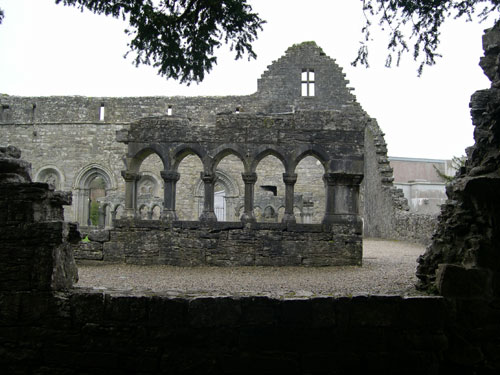 |
| Photo Ed Land March 2005 |
 |
| Photo Ed Land March 2005 |
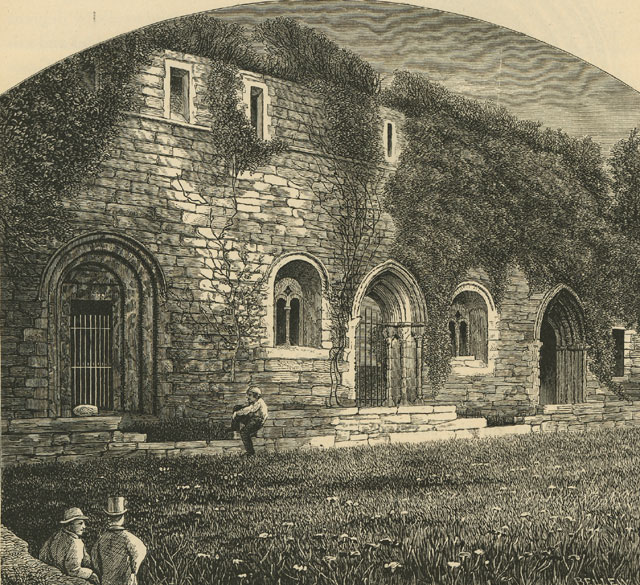 |
|
Print collection of Maggie Land Blanck
|
| Cong Abby, Co. Mayo
|
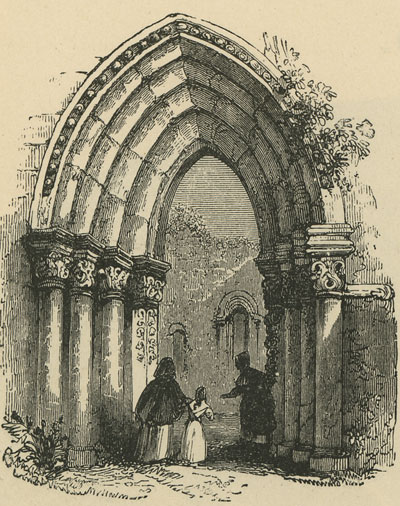 |
|
Print collection of Maggie Land Blanck
|
| Cong Abby, Co. Mayo
|
 |
|
Print collection of Maggie Land Blanck
|
| Cong Abby, Co. Mayo
|
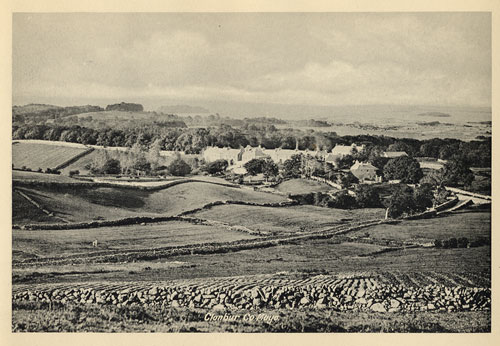 |
| Clonbur, Co. Mayo
Clonbur is a village at the Galway/Mayo border on the strip of land that seperated Lough Mask from Lough Carrib. One of the loughs can be seen in the backgound of this photo.
|
| Photo from Souvenir of Ballinrobe (Co. Mayo) Album of Local Views, F Kilkelly, Bookseller, Ballinrobe, no date |
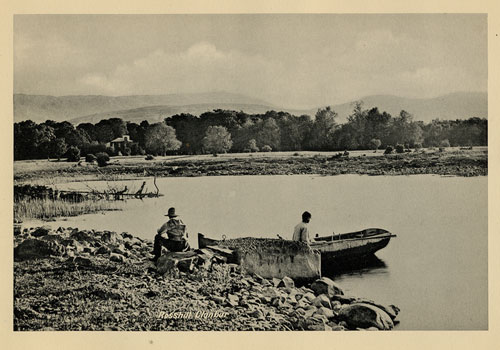 |
| Rosshill, Clonbur
|
| Photo from Souvenir of Ballinrobe (Co. Mayo) Album of Local Views, F Kilkelly, Bookseller, Ballinrobe, no date |
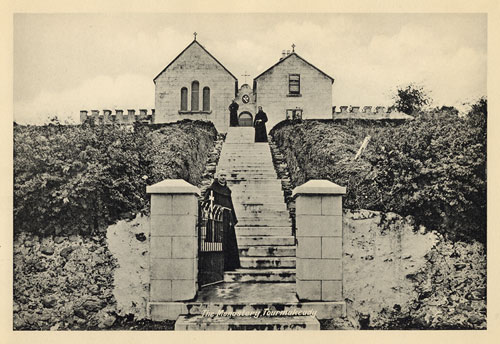 |
| The Monastery, Tourmakeady
The village of Tourmakeady is on the west side of Lough Mask in the Partry Mountains. A Franciscan monastery and school were found there in 1848. The school was in existance until 1927.
|
| Photo from Souvenir of Ballinrobe (Co. Mayo) Album of Local Views, F Kilkelly, Bookseller, Ballinrobe, no date |
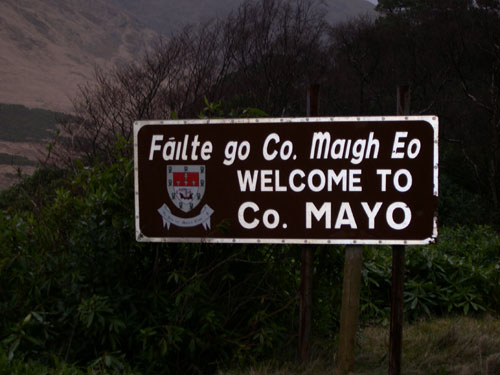
|
|
| Photo Ed Land, 2005 | |
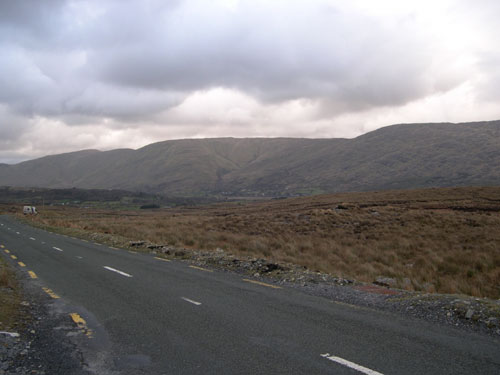
|
|
| Photo Ed Land, 2005 | |

|
Crough Patrick
|
| Photo Ed Land, 2005 | |
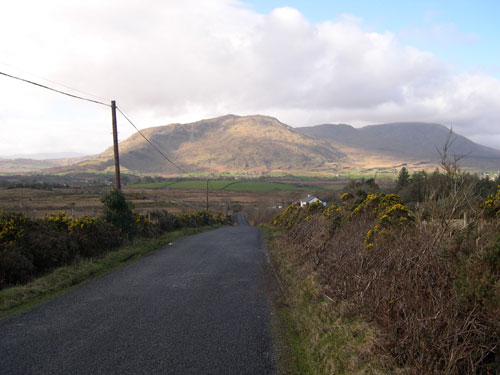
|
|
| Photo Ed Land, 2005 | |
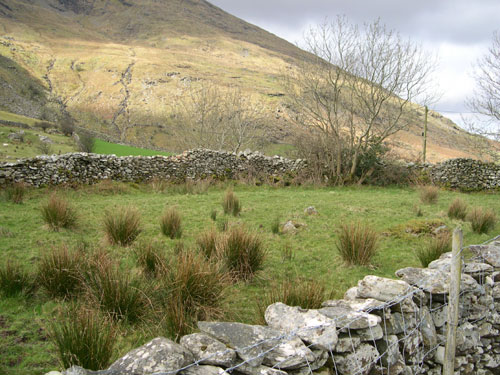
|
|
| Photo Ed Land, 2005 | |
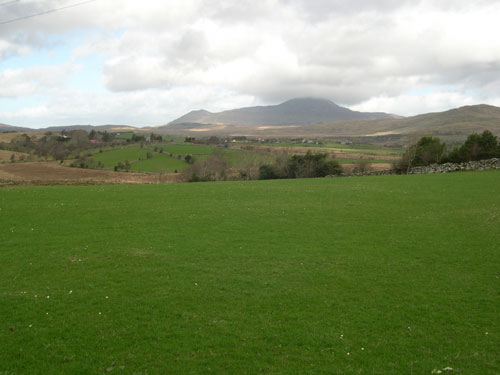
|
|
| Photo Ed Land, 2005 | |
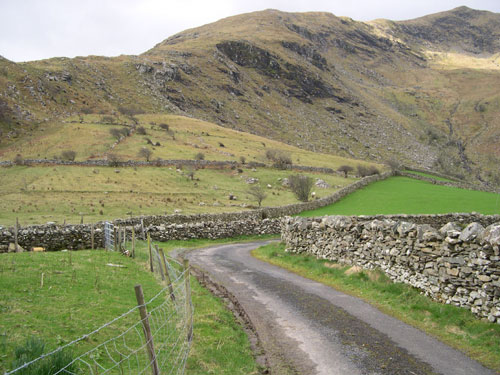
| |
| Photo Ed Land, March 2005
| |
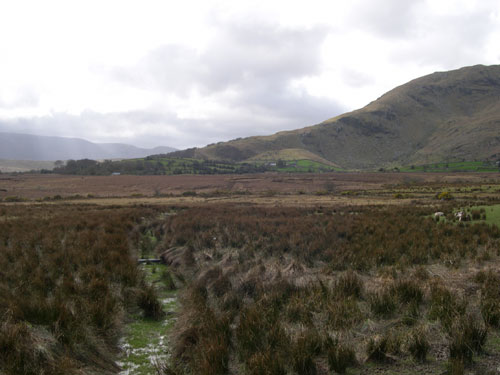
| |
| Photo Ed Land, March 2005
| |
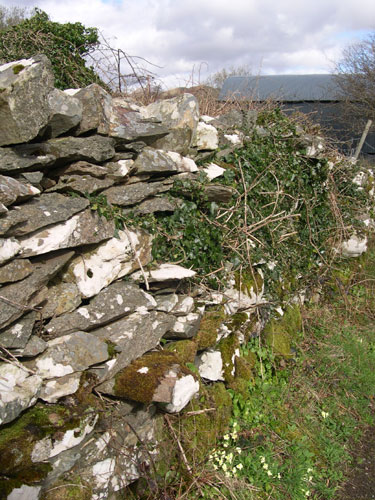
| |
| Photo Ed Land, March 2005
| |
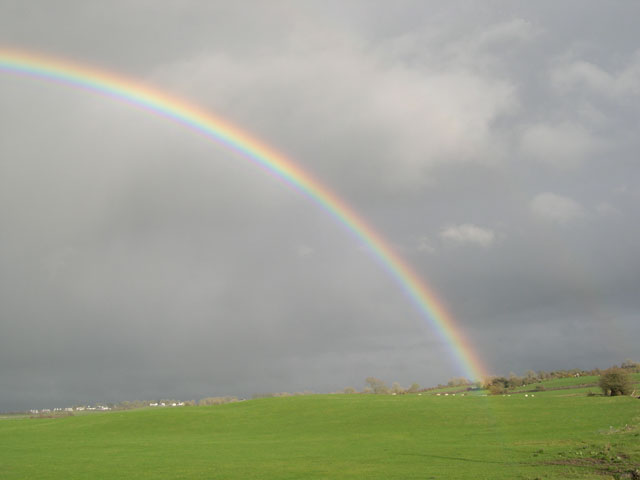
|
| Photo Ed Land, March 2005
|
| The Killeries
| |
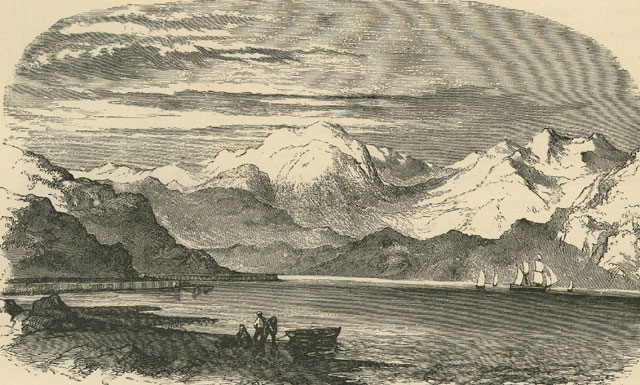
| |
| Print collection of Maggie Land Blanck
| |
| The Killeries, Mayo | |
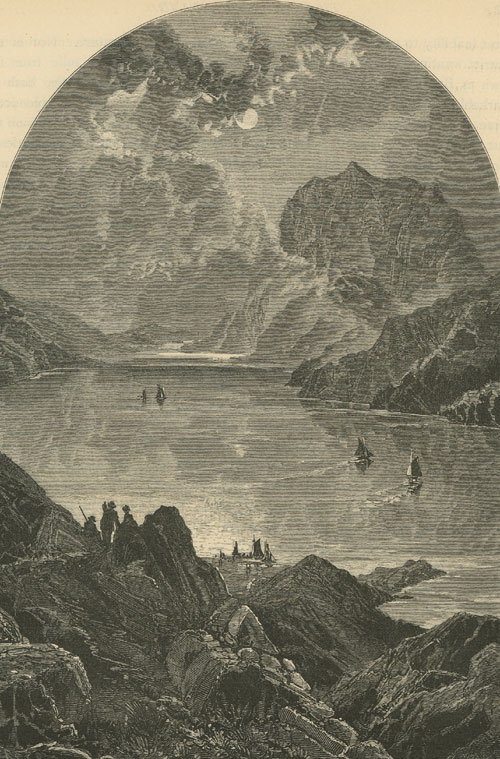
| |
| Print collection of Maggie Land Blanck | |
| Muilrea, Killeries | |
| Irish Sentiment in the US The following two postcards represent Irish/American sentiments in the US | |
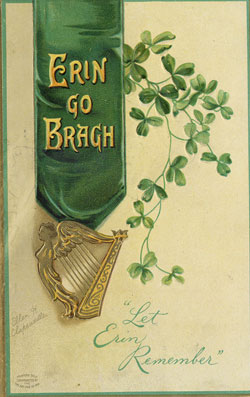
|
"Erin Go Braugh Let Erin Remember" Postmarked 1911 Post card collection of Maggie Land Blanck |
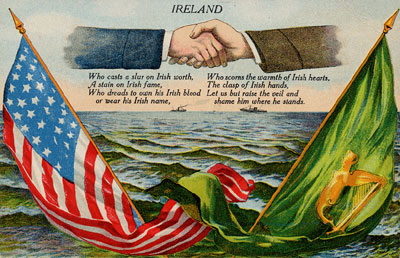
|
"Ireland"
"Who casts a slur on Irish worth,
Who scorns the warmth of Irish hearts, No postmark. |
| Post card collection of Maggie Land Blanck | |
|
Discription of Cong in 1837 Cong is a small town and a parish south or Ballinrobe. There were Langans in this parish, but I don't know if they were related. The following descriptions of Cong is from "A Topographic Dictionary of Ireland" by Samuel Lewis, written in 1837
"Cong , a post-town and parish, partly in the barony of Ross, county of Galway, but chiefly in that of Kilmaine, county of Mayo, and province of Cannaught, 19 miles from Castlebar, and 121 miles (W.) from Dublin; containing 8378 in habitants. This place, though now only an inconsiderable village, was formerly a town of some importance, and the ancient residence of the kings of Cannaught. A monastery to the Blessed Virgin, was founded here by St. Fechan, who died in 664; though by some writers its foundations ascribed to Donald, son of Aed, nephew of Amirach, King of Ireland, who is said to have made St. Fechan its first abbot. Little further is recorded of its history till 1134, when a great part of the town was burnt and the abbey plundered by the people of Munster. Roderic O’Connor, the last native king of all Ireland, spent the last 15 years of his life in seclusion within this monastery, where he died on 29th of November 1198, in the 82nd year of his age; He was interred at Clonmacnios. In 1201 the town and monastery were plundered by William de Burgo, who repeated his ravages in 1204; and in 1310, the town was plundered by Jugh Breifneach. the family of De borgo afterwards became munificent benefactors to the abbey, to which they gave ample endowments in land, and it continued to flourish till the dissolution. Queen Elizabeth granted part of its possessions to the Provost and Fellows of Trinity College, Dublin: and James I granted a lease of the abbey to Sir John King, Knt., ancestor of the present Earl of Kingston.These descriptions were written before the Great Famine of 1845-48. Cong was the location of the John Wayne movie "The Quite Man". |
| If you have any suggestions, corrections, information, copies of documents, or photos that you would like to share with this page, please contact me at maggie@maggieblanck.com |
| JOHN WALSH | |||
| MATHIAS LANGAN | |||
| WALSH/LANGANS INTRODUCTION | |||
| HOME PAGE | |||
| Irish Life | |||
| Please feel free to link to this web page. You may use images on this web page provided that you give proper acknowledgement to this web page and include the same acknowledgments that I have made to the provenance of the image. Please be judicious. Please don't use all the images. You may quote up to seventy five words of my original text from this web page and use any cited quotes on this web page provided you give proper acknowledgement to this web page and include the same acknowledgments that I have made to the provenance of the information. Please do not cut and paste the whole page. You may NOT make use any of the images or information on this web page for your personal profit. You may NOT claim any content of this web page as your original idea. Thanks, Maggie |
| © Maggie Land Blanck - Page created 2004 - Last update March 2012 |